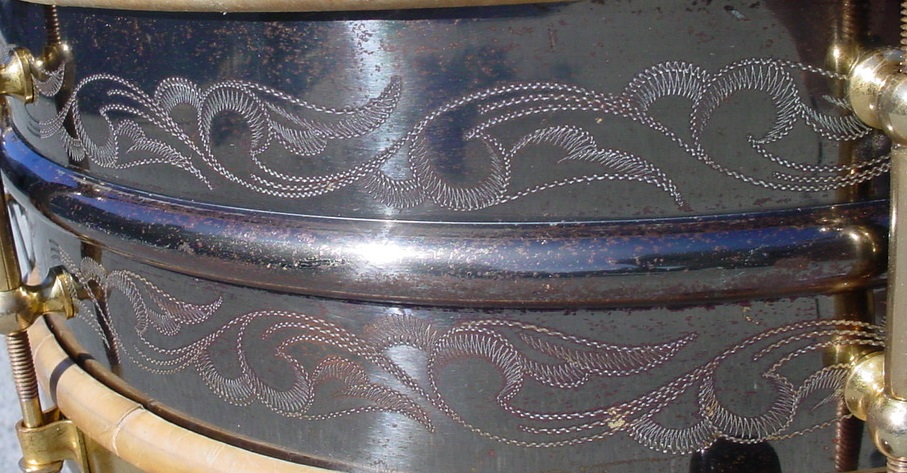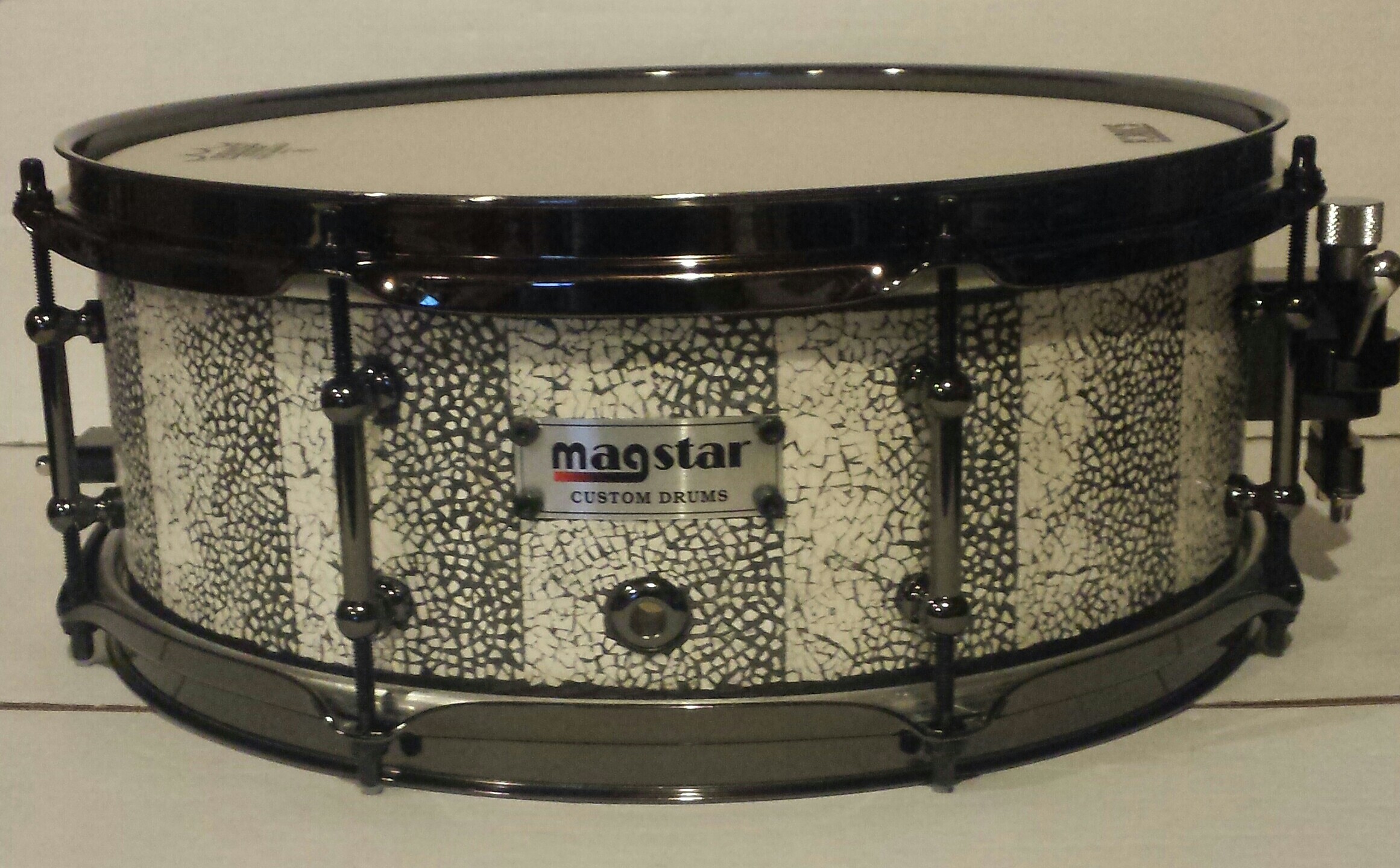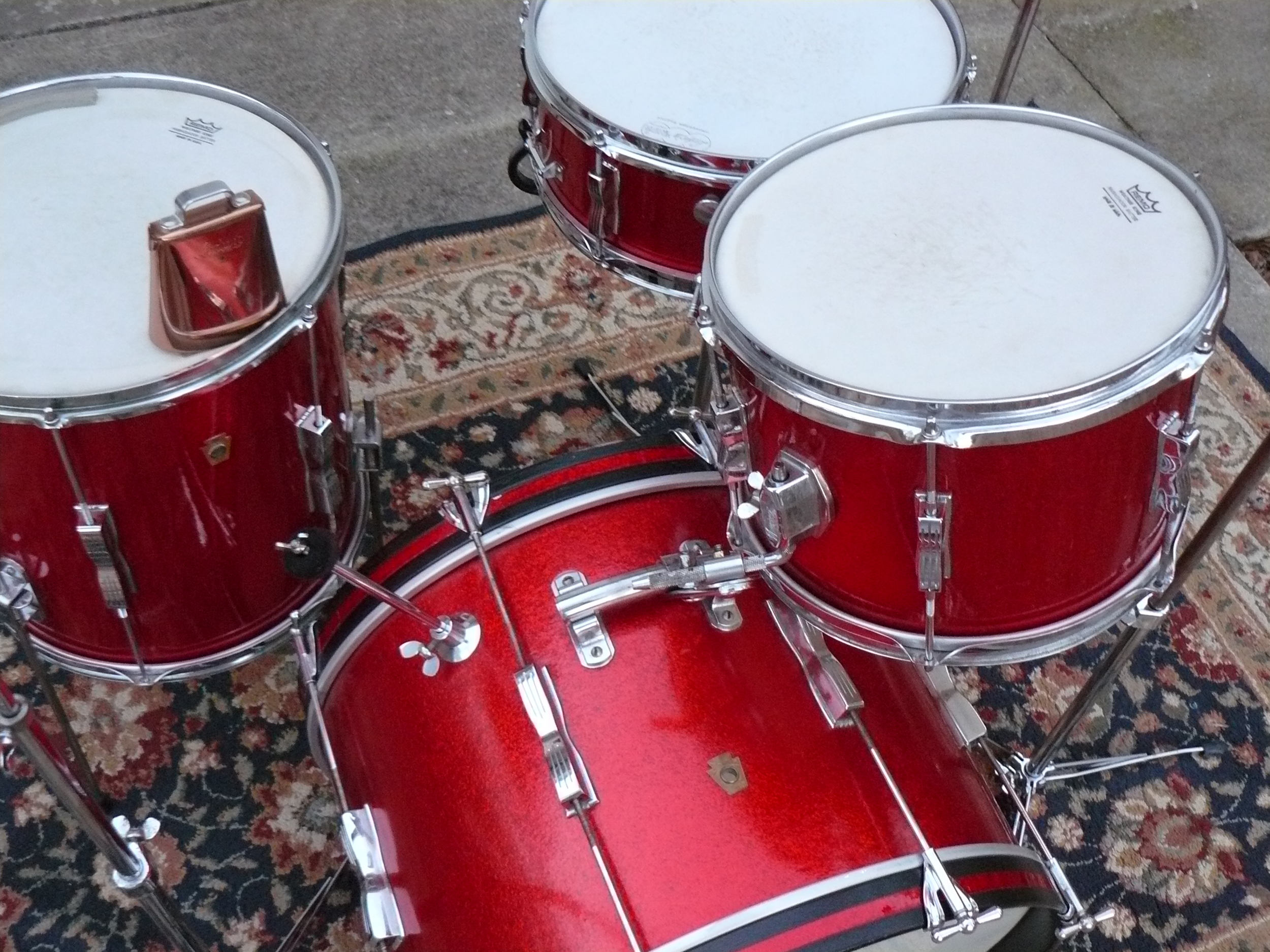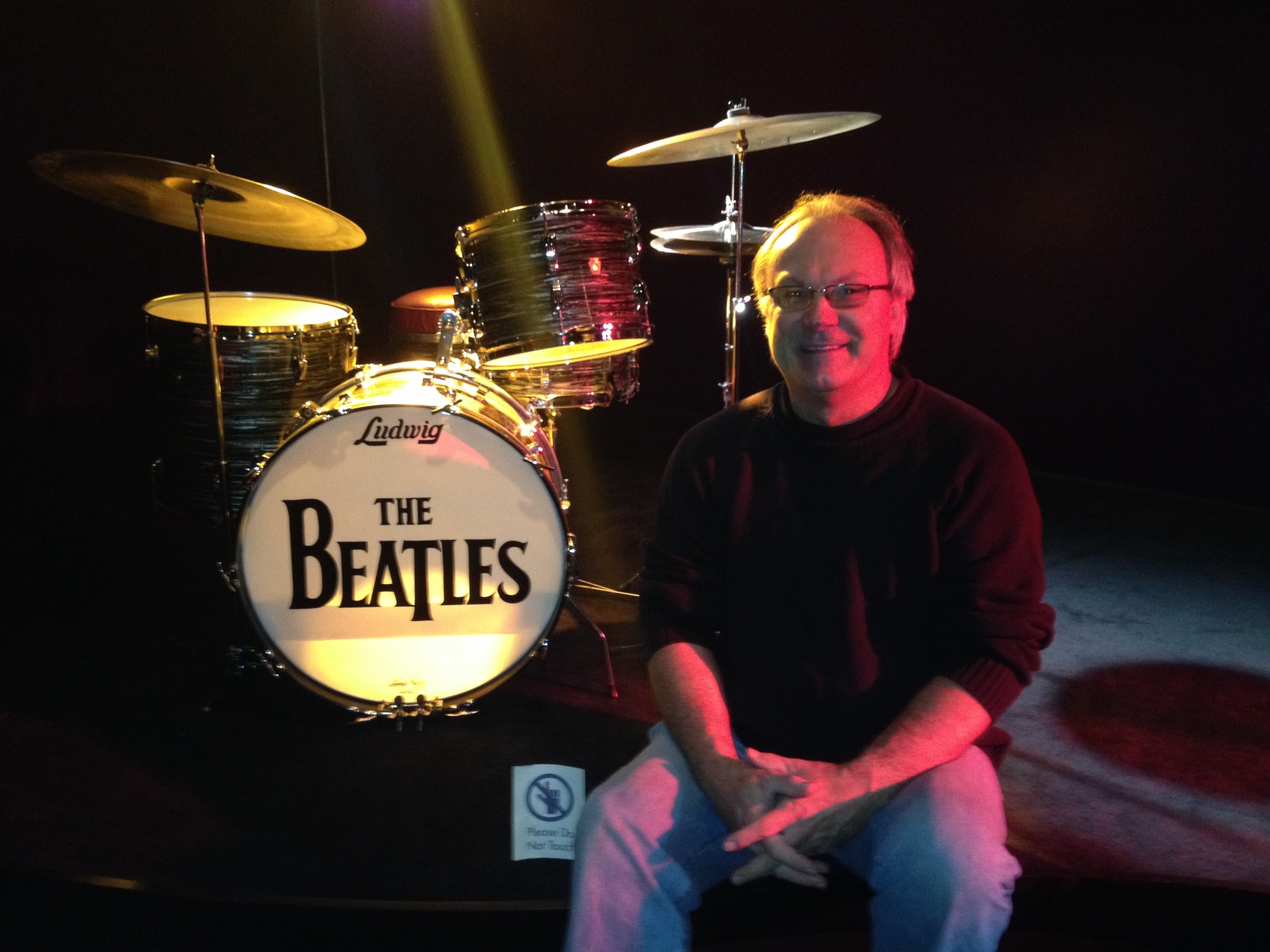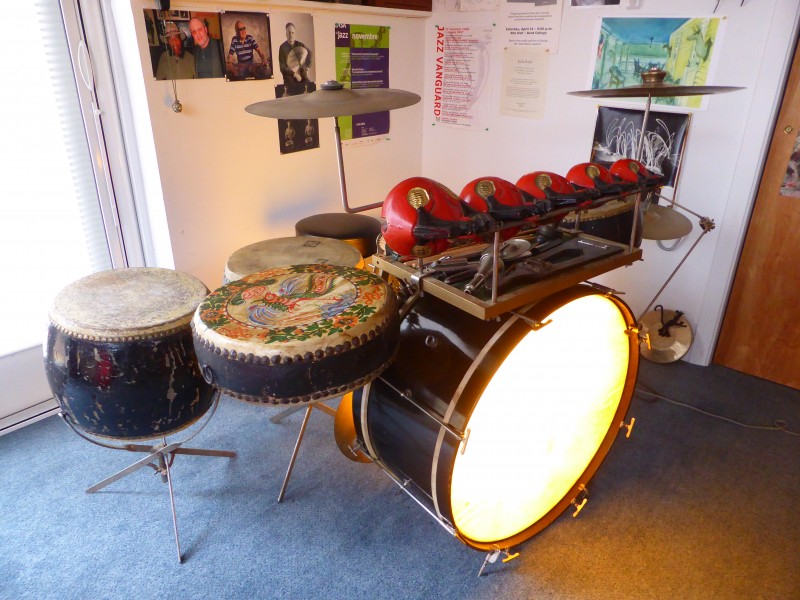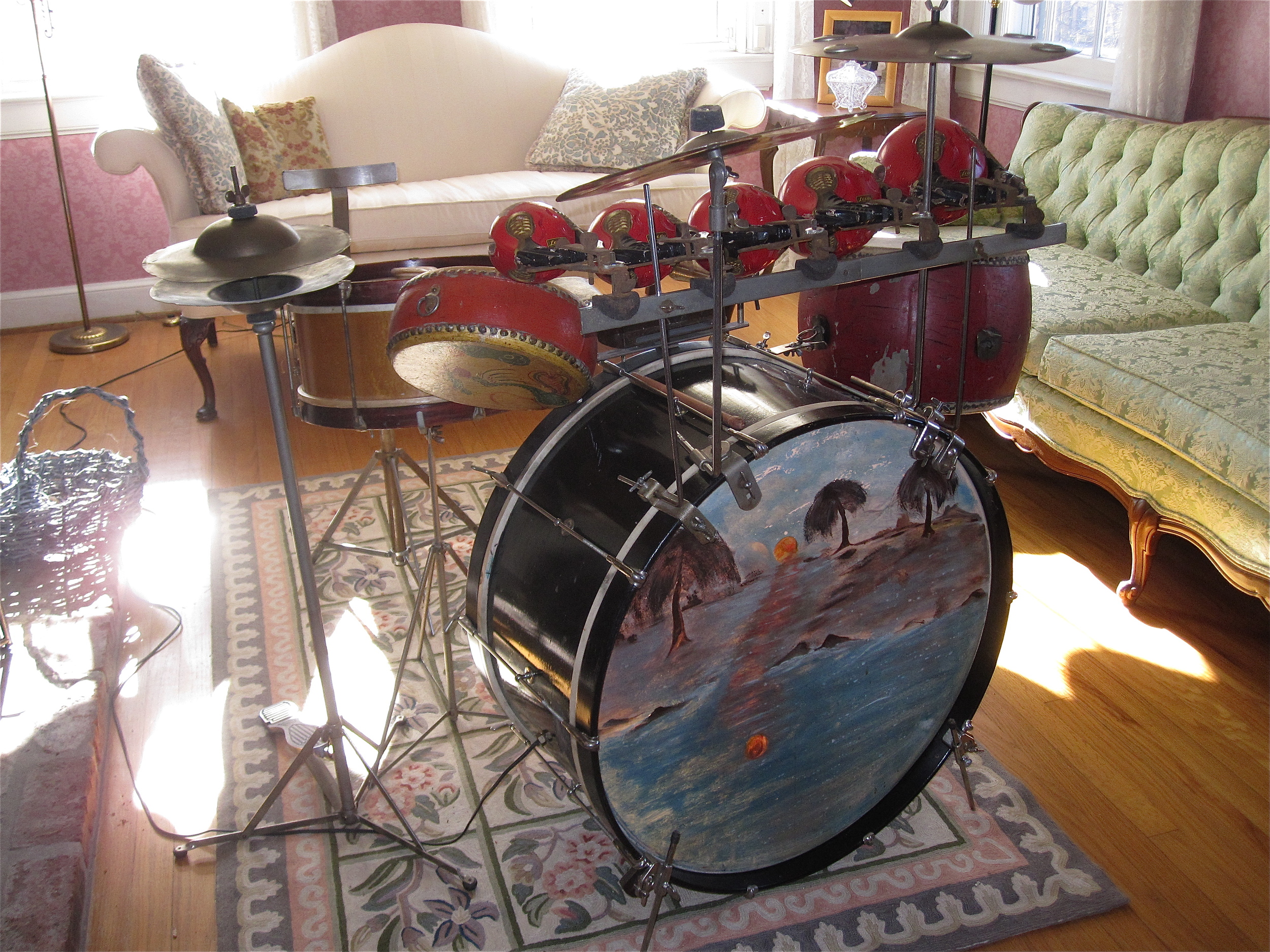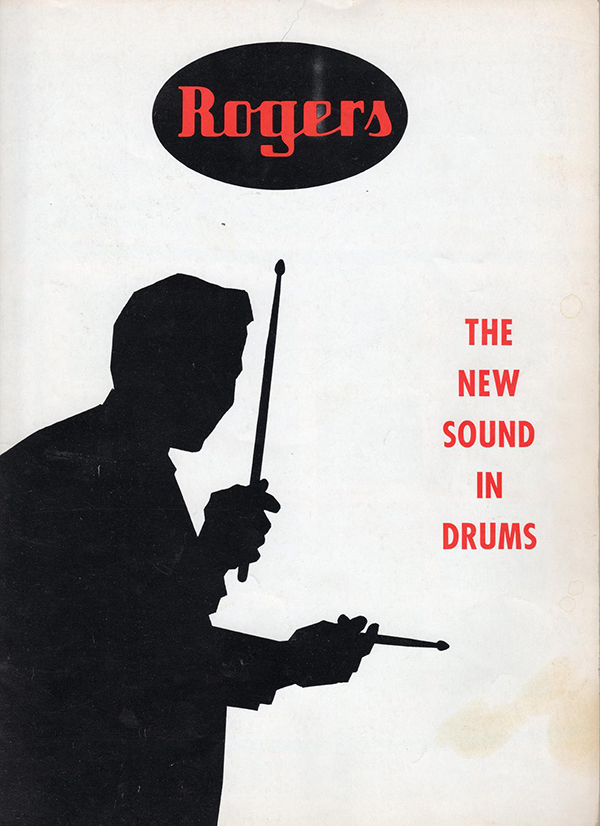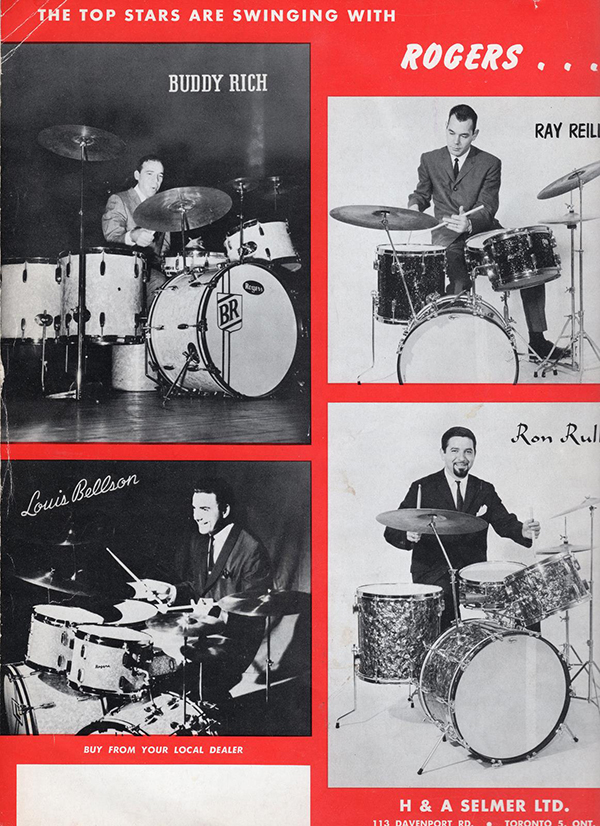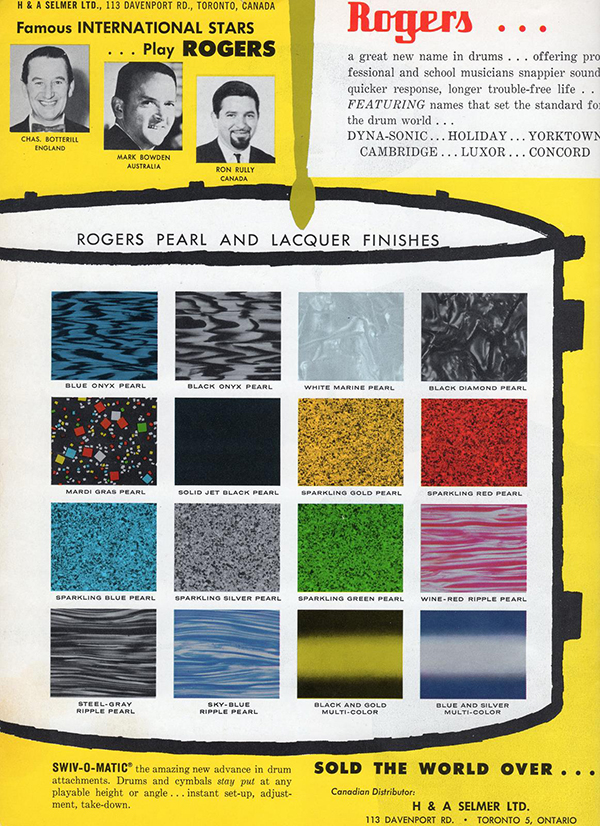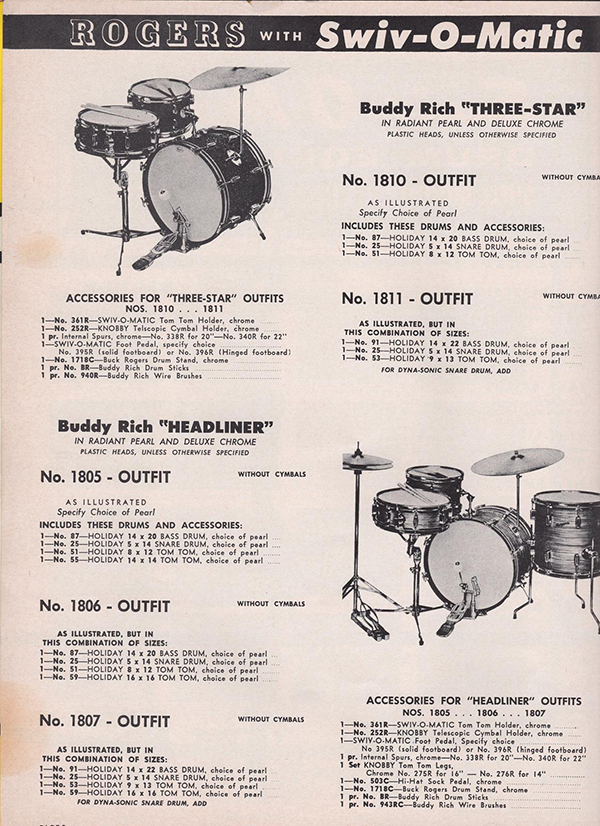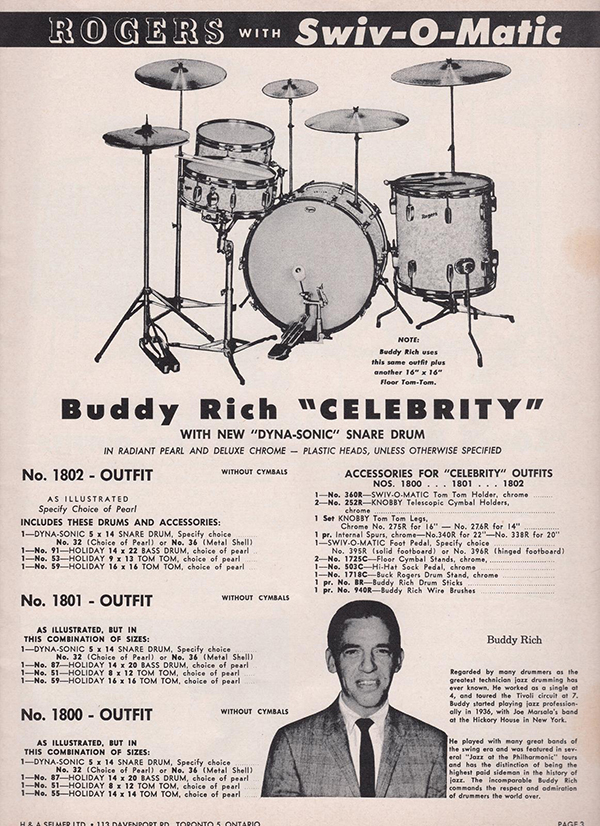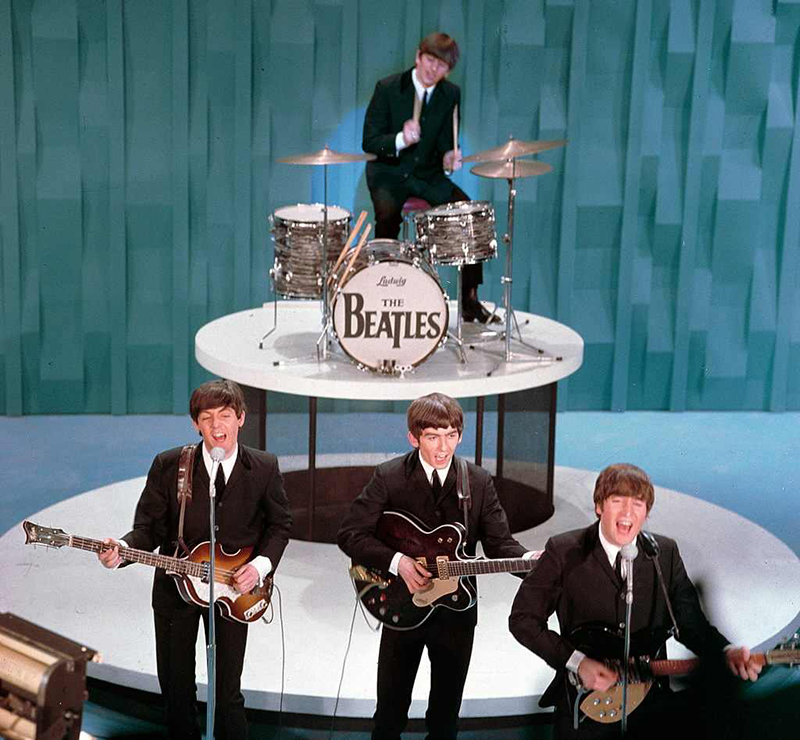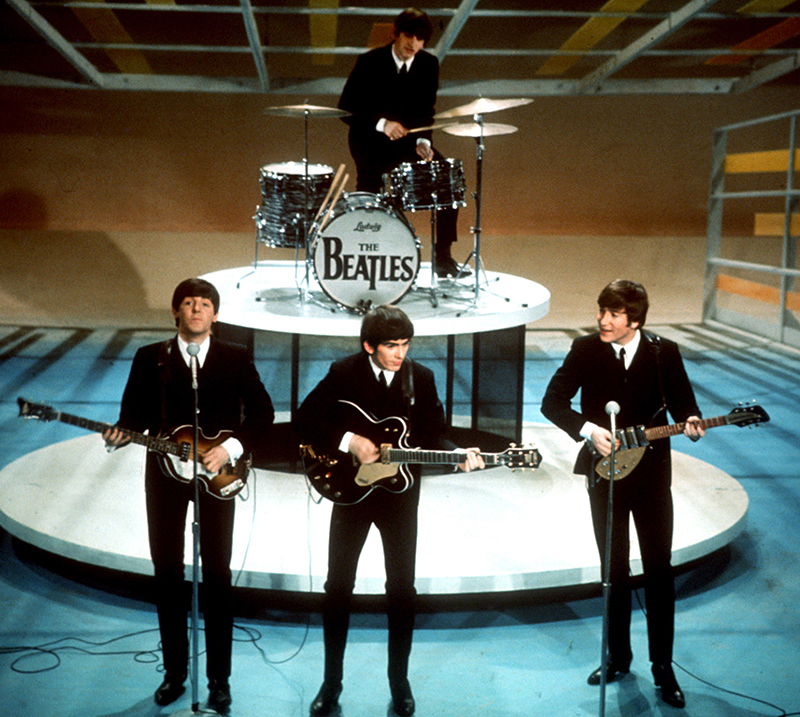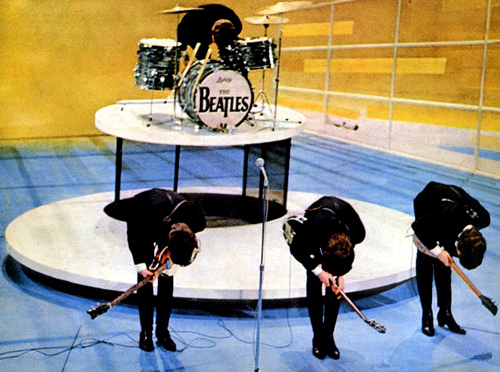Isosceles, equilateral, or scalene? Those crazy French. I guess this is their answer to Trixon. What's your opinion on these drums? Let us know below in the comments.
Late 70s Premier Resonators
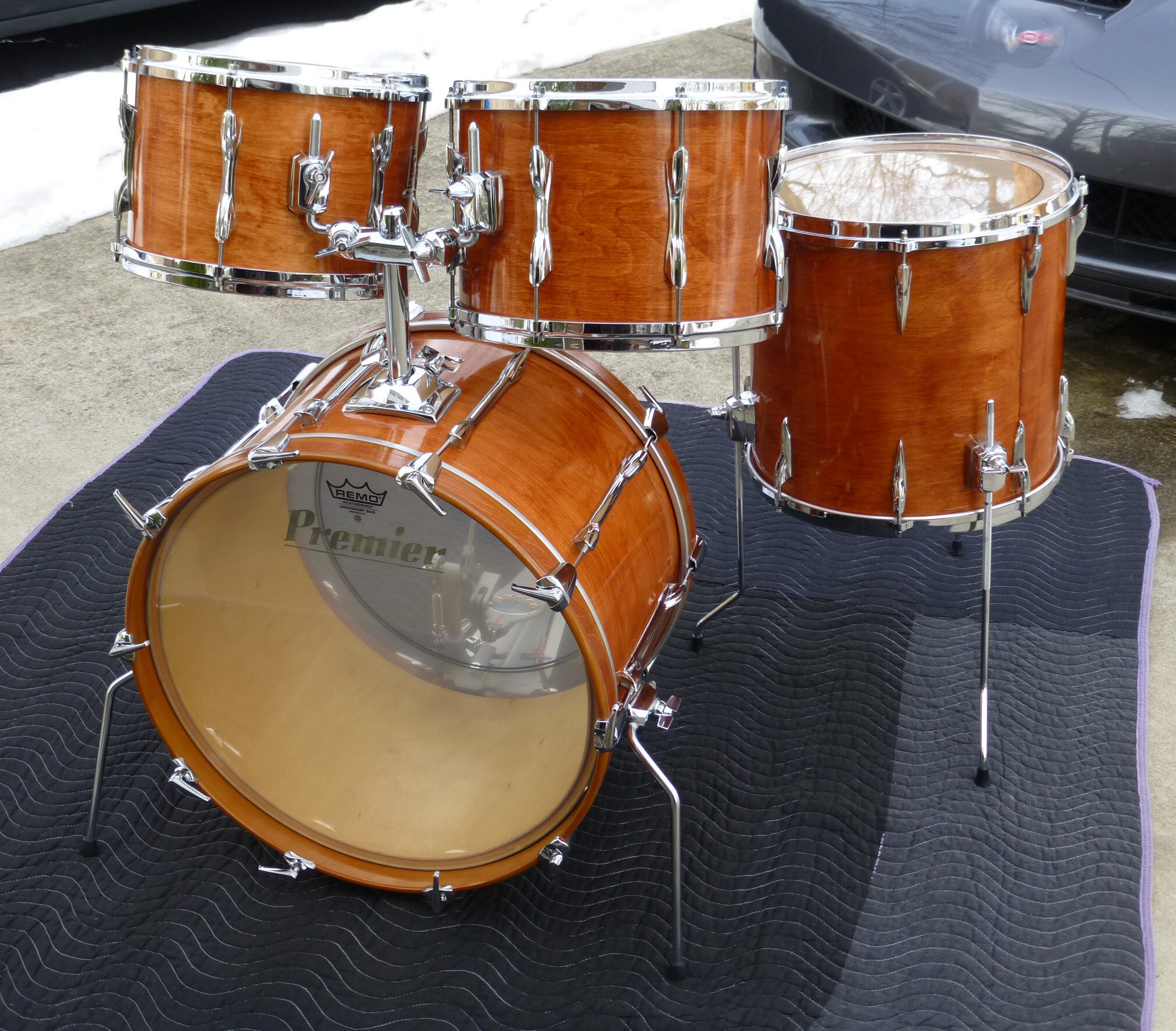

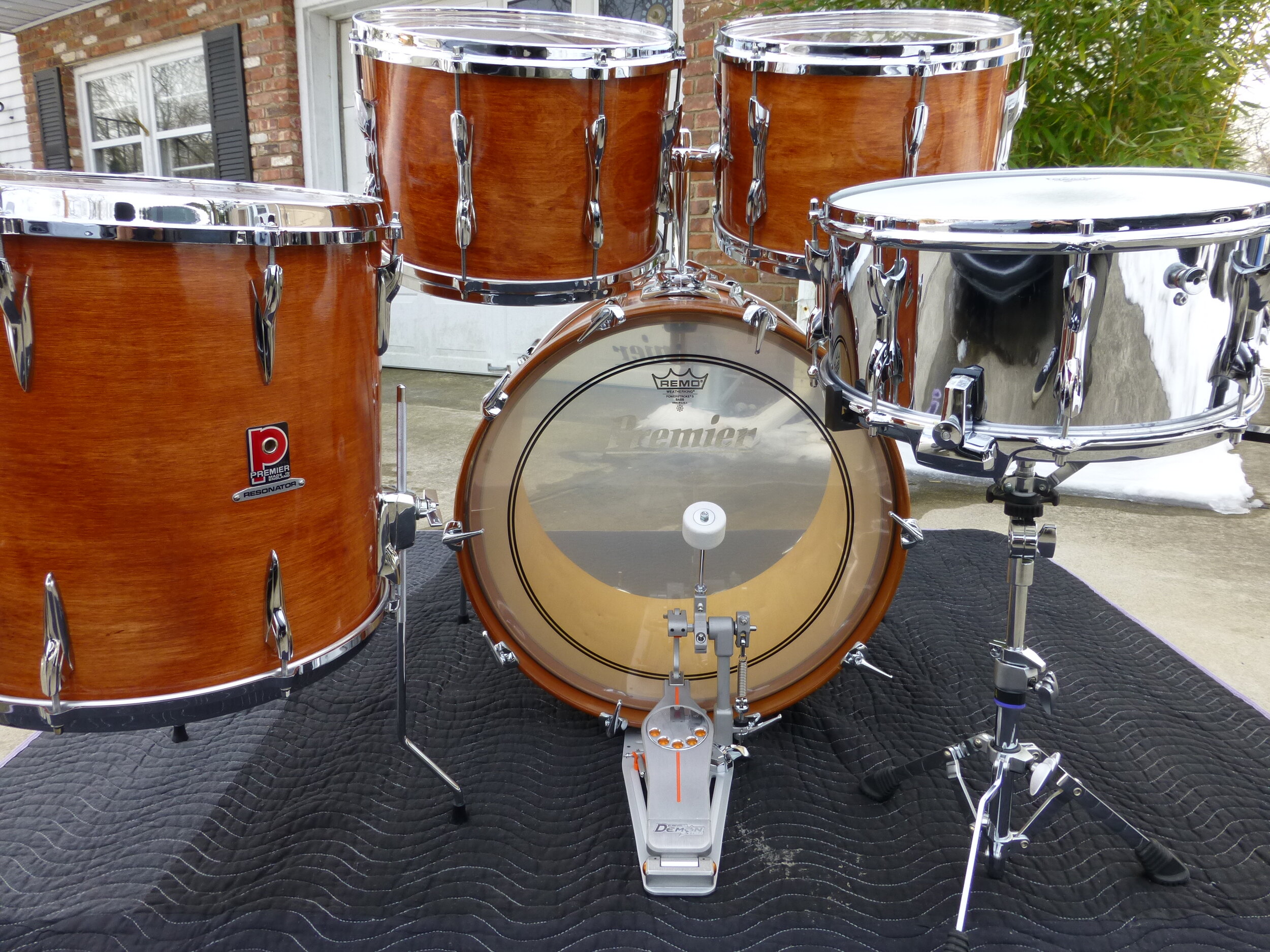
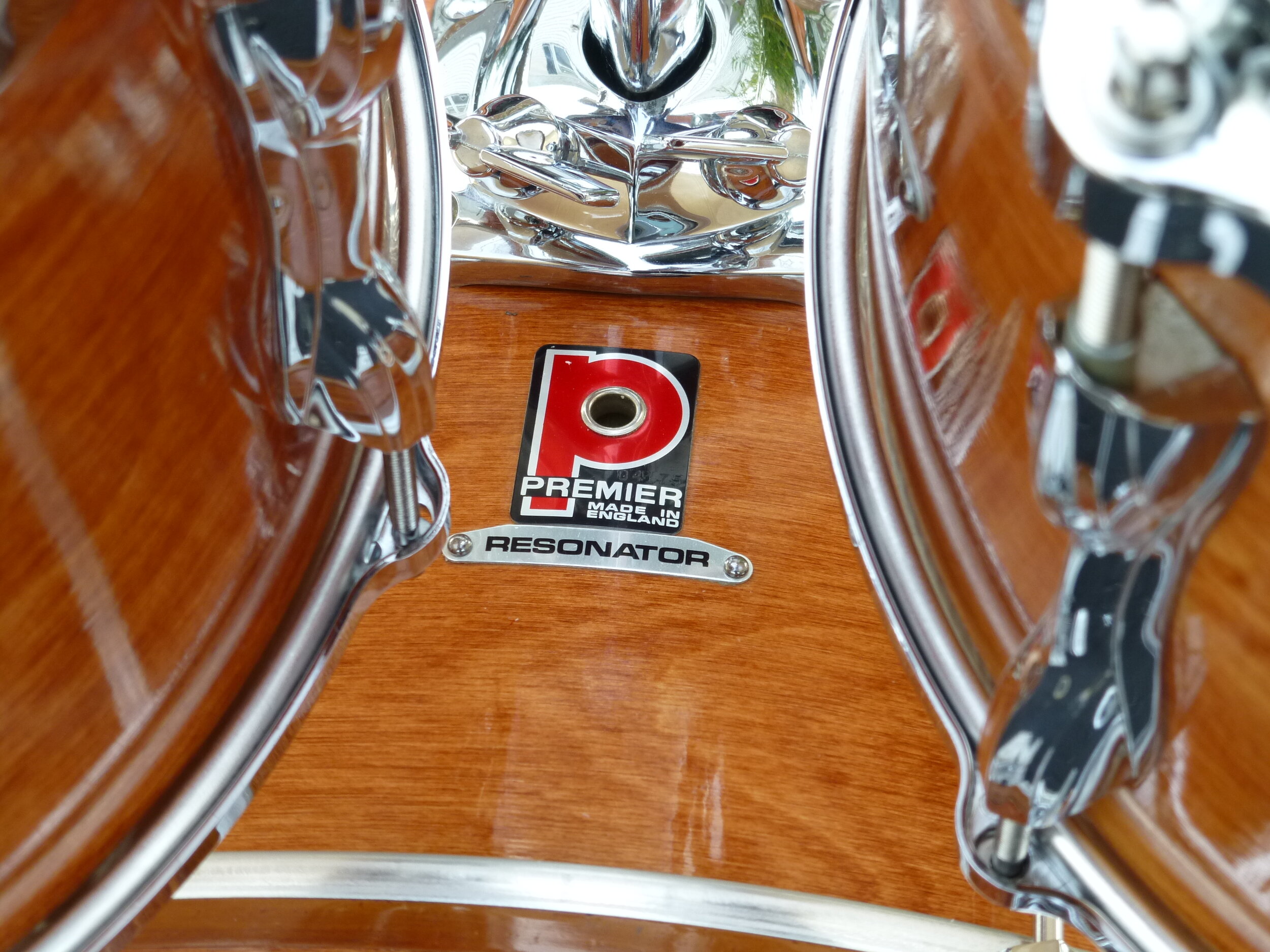
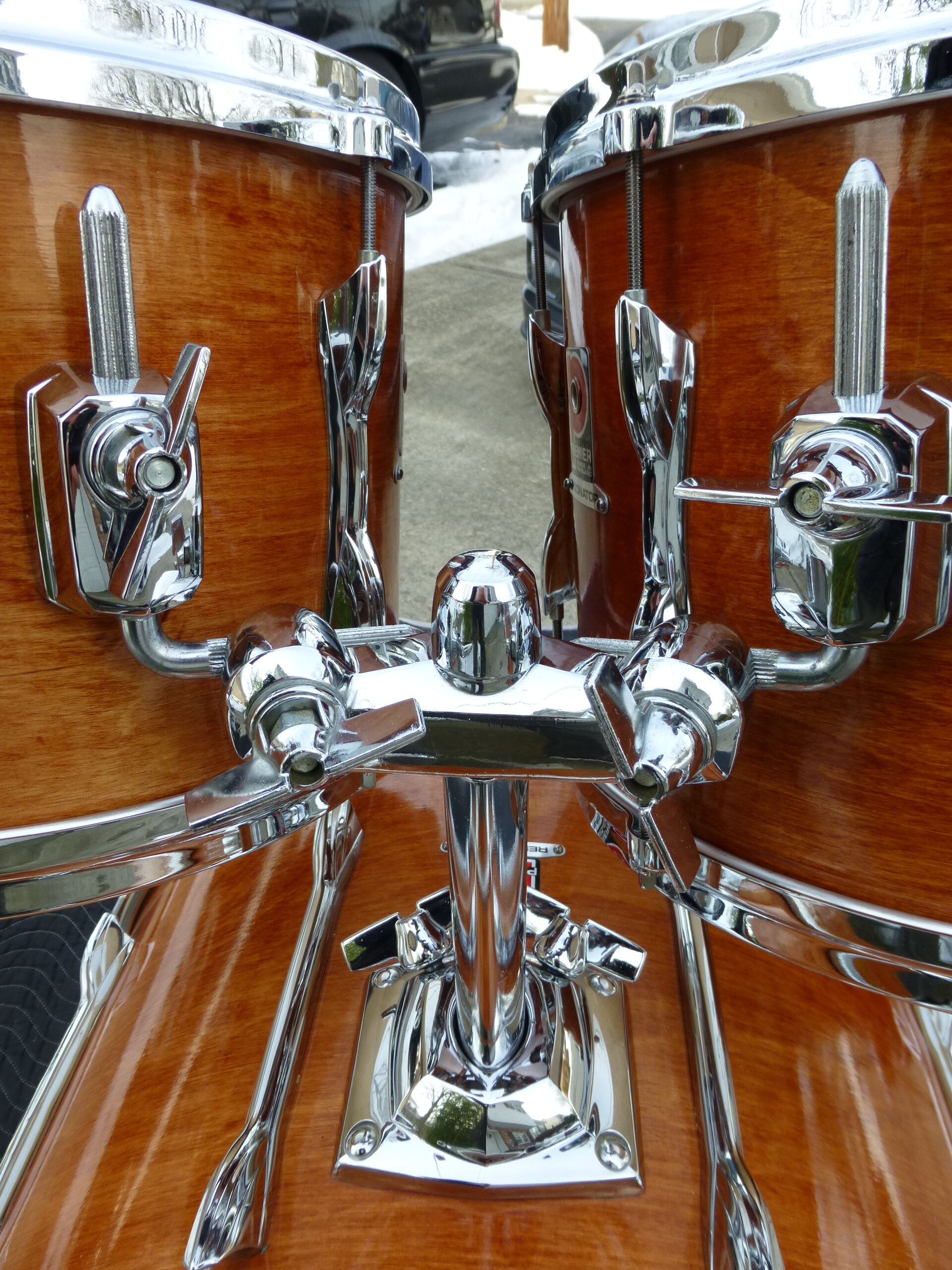
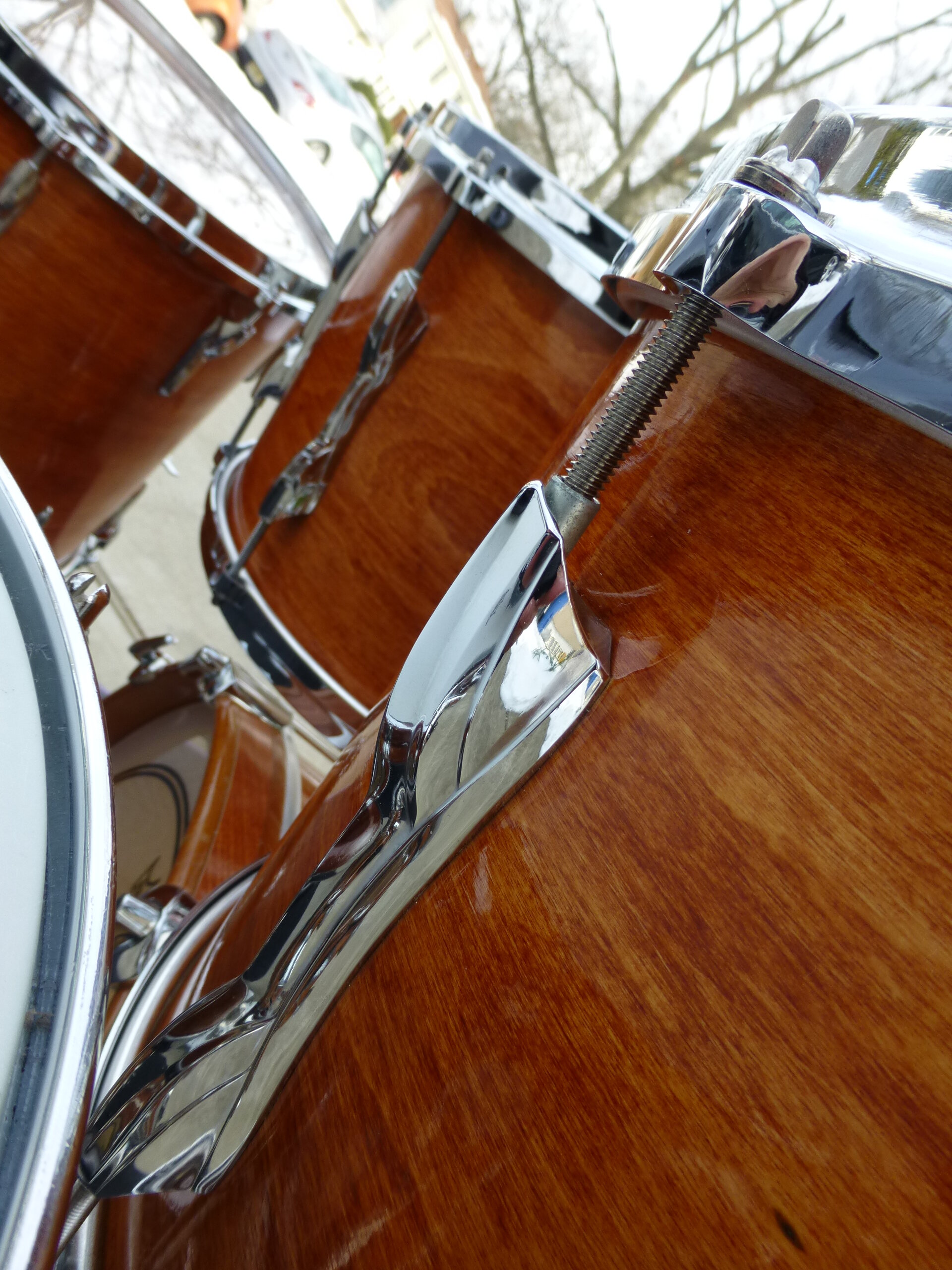
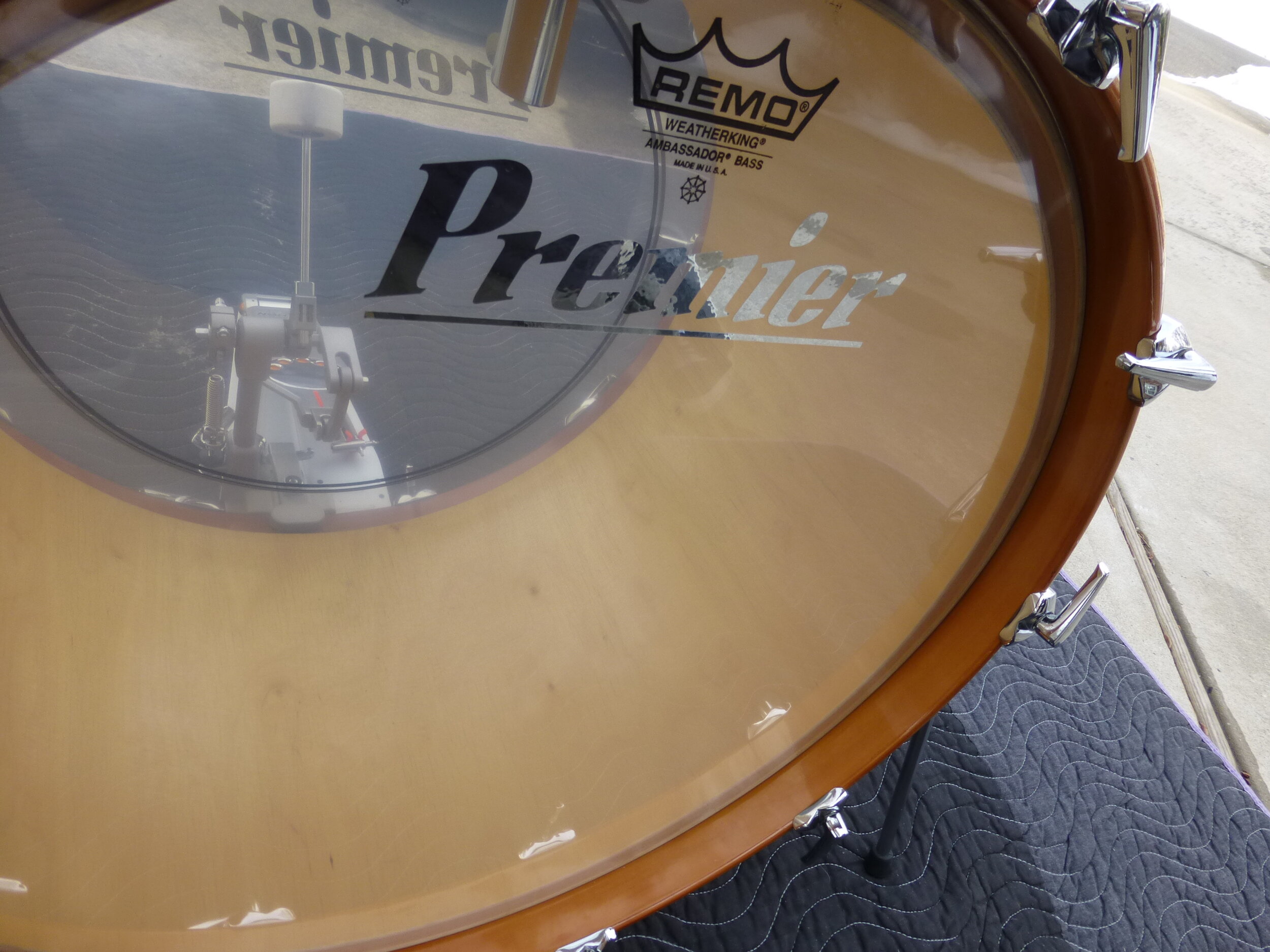
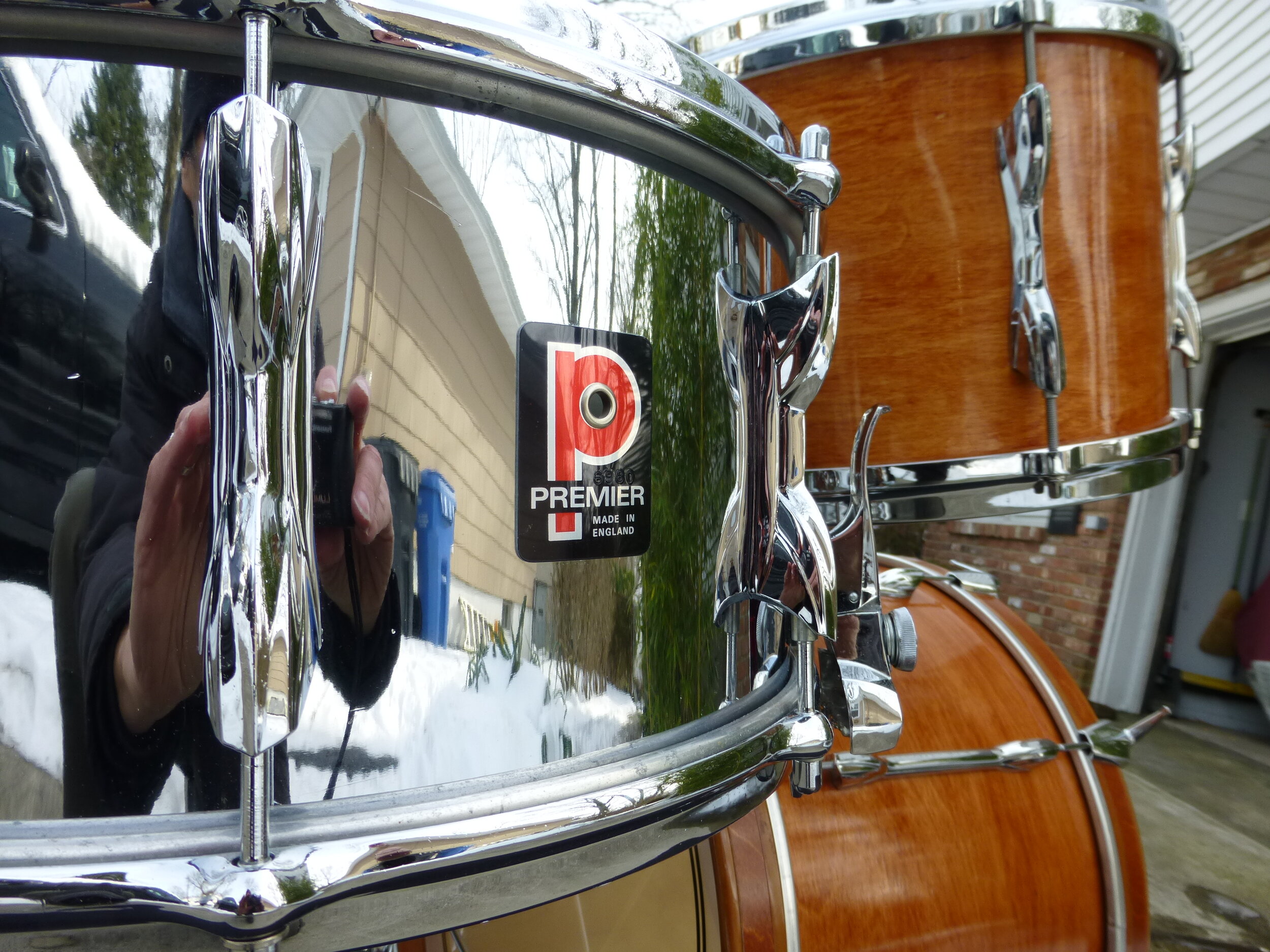
I had a blast acquiring the set, tracking down and sourcing the parts, repairing, cleaning, assembling, tuning, and bringing the set back to life.
Read moreLate 1960s Beverley Drums
This month I’m looking at the rather lovely Beverley drums of the late 1960’s / early 1970’s. Originating from the North Yorkshire town of Beverley, ownership of the company changed hands a few times between their appearance on the market in the 1930’s and their demise in 1979. These drums really do represent some of the finest sounding English drums, in my opinion, the nicer drums produced between 1968 and the early 1970’s.
The 1969 catalogue marketed Beverley drums as ‘The Sound Of Success’ although they were viewed in the UK as lower quality in comparison to other brands. The shells, however, were produced in the Premier factory in Leicester (UK) and were 3 ply birch or 3 ply mahogany with beech reinforcement hoops (identical to the Premier drums of that era).
They differed from Premier drums in many ways, most notably the lugs; rather than one piece, all drums featured single lugs top and bottom in a design not dissimilar to the American market leaders. The finishes of the drums were different too, with the black Oyster the closest in comparison to Ludwig’s famous ‘Beatles’ kit of the same period. Other finishes included nice glitters (Champagne, Blue, Red) and some very subtle shimmers (red, blue). All drums were fitted with triple flange hoops, the bass drums having disappearing spurs and disappearing shell-to-shell tom mounts. The badges were silver circles with a blue ‘b’ in the centre.
The configurations in the 1969 catalogue are as follows;
‘Galaxy 21’ set – 22x17, 13x9, 16x16 with Cosmic 21 snare; ‘Galaxy 650’ set – 22x17, 13x9, 16x16 with wooden 6050 snare; ‘Panorama 21’ set – 22x17, 12x8, 13x9, 16x16 with Cosmic 21 snare; ‘Panorama 22’ with 2 bass drums and wooden snare.
Bass drums were available from 18” up to 24”, so we do see some variations in kit configurations, which are a little rarer to have survived in good condition.
Overlooked mainly in UK at the time the drums gained the most popularity in the USA and Holland. Some argue that they were a cheaper alternative to Ludwig drums, whilst looking (and sounding) very similar. These drums always surprise me when they come through my shop, in a good way. Big, warm tones from the bass drum and floor tom, especially the African mahogany shells. The birch shelled kits are a good too, accurate in tone with good projection. The bass drums on these sets never fail to impress me - a 22” Beverley bass drum sounds like a 24” with your eyes closed!
While some never doubted them, there is a growing respect for Beverley drums in the UK and any kits I have in stock don’t stick around long. The most Recent went to a customer in Switzerland who says this:
“I just love my 60s Beverly Blue Label kit. It has a vintage feel but a big deep resonant sound that really punches if you want it to, but is subtle enough for quiet performance situations. I feel right at home on this kit playing rock, blues or country. Its old-school for sure, but some things never go out of style” HJ
The ‘Cosmic 21’ snare drums that came with these kits are worth a mention on their own, so I’ll cover those next month.
I found this link online to some Beverley kits in use...
1919-1922 Ludwig & Ludwig 5x14 6-Lug, Fancy Scroll Engraved DeLuxe
Here’s another snare drum to enter into the collection. This one came from Ebay a few months ago. The seller was kind enough to end the auction early for me.
1919-1922 LUDWIG & LUDWIG 5x14 6 LUG, FANCY SCROLL ENGRAVED DeLUXE STANDARD MODEL
The Shell:
Most of the scroll engraved DeLuxes that I have seen and own from the 6 lug era (1919-1922) all have the simple scroll/wave engraving pattern. This shell has a much fancier scroll pattern that I have never seen before on a 6 lug DeLuxe although noted Black Beauty expert John Aldridge told me that he has seen another one like this. I do have two 8 lug scroll DeLuxes with the fancy scroll engraving but these are 1923 or later. See photos. I have also included a photo of a later (single-flanged rims and Artgold hardware) simple scroll 6 lug DeLuxe that is in my cleaning/restoration queue. The overall condition of the black nickel shell and the original factory lacquer clear coat is pretty good but the engraving on the majority of the panels of this drum have darkened over the years but not in a tarnished manner so I decided to just clean and polish the shell and leave it as is. The only other alternative would have been to send the shell to Adrian Kirchler of AK Drums, my gut said “keep this one rustic.”
From what I have been told there were three L & L engravers during the DeLuxe/Black Beauty era so the question is: did one of these engravers get a special order to enhance the typical scroll/wave engraving on this drum or was there a fourth “scratcher” in their midst? Thanks to Bill Wanser for helping date this drum from 1919-1922. In 1923 L & L went to an 8 lug shell and single flanged rims on their Professional Models. The seller informed me that the original owner was a dentist in the Midwest named Dr. Donald R. Skillen. You can see where he had the drum personalized but unfortunately (or fortunately) the engraving except for the date is covered up by the top head. Still a nice artifact from the era.
The Hardware:
Bonus time...from the eBay photos my hunch was correct, the hardware is gold plated. The single band rims are in round with a strong oval Ludwig & Ludwig stamp on the top rim. All of the hardware still had a good amount of gold plating so I just cleaned everything with some 3-In-One oil. As always the steel tension rods needed more attention so after cleaning them I gave them a few coats of clear lacquer to prevent any rust from occurring in the future. Someone added a metal “bar” covering two holes in the strainer gut piece and the snare cord was attached to this. I am guessing that the owner thought this was a better way to attach the snare cord. I also decided to leave it as is...another cool artifact that came with the drum.
Of-the-era top and bottom calf heads and James Snappi Snares rounded out this cleaning /restoration.
Enjoy!
The Eggstar Drum
EGGSCITING DESIGN EGGCELLENT SOUND EGGSPERT CRAFTSMANSHIP
The idea for this drum first came to me many years ago while watching my mom, Lola Rokeach, refinish a table with eggshells. Yes, actual eggshells! The finish looked very striking to me, and I thought that it would look pretty cool on a drum.When I mentioned it to her about a year ago, her response was "Well, bring me a drum." My mom, in addition to raising eight kids, is quite an accomplished artist. She's done everything from sculpture, to painting, to rug making, and oh yes, furniture refinishing. She celebrated her 80th birthday last June. She was pretty confident that the eggshell finish would work on a drum. I wasn't so sure, but I thought that it would be worth a try.
I didn't want to use just any old drum. I had to get something special. I'm a Yamaha endorser, but I didn't want to bug them about doing a custom made one-off that might or might not work anyway. Besides, I was thinking about a single--ply solid shell for this project, and Yamaha has yet to offer one (I hope that they do someday). I did want to get someone involved who knew something about drum finishes.My mom lives just outside of New York City in the small town of Harrington Park, NJ. On one of my recent trips back there, I visited my old friend Neil Richter, also a drummer, also from Harrington Park, NJ. He told me that he had recently reconnected with yet another drummer from Harrington Park, Rob Kampa. Readers of this newsletter may know about Rob from his drum company Magstar, and his work with DrumMaker. Rob is known as one of the best drum craftsmen in the country. I had read rave reviews of Rob's custom drums over the years, in Modern Drummer magazine and on the internet. I also knew Rob when I was a kid.Between Fall of 1969 and Spring of 1970, I played in the percussion section of the Harrington Park School band with Neil and Rob. They were in eighth grade, I was in fifth. Rob, Neil, and another Harrington Park drummer named Mike Murtaugh, who was already in high school by this time, were the best drummers around. I thought that those guys were about the coolest dudes that ever lived. Getting to hang out with them definitely helped plant the seeds of my desire to be a drummer early on.Rob has been living in Nashville for the past few years, but still gets up to New Jersey every once in a while to visit family.
The more I thought about it, the more I came to realize that Rob would be the perfect guy to help make this happen, If he'd be willing. He could even get together with my mom and figure out the woodworking logistics if necessary. Well, Rob and I reconnected on the phone. Once we got to talking about drums, we decided to order a 5.5 x 14 solid shell from Vaughncraft. Vaughncraft sent a shell that was so beautifully figured that it would have been a crime to cover up the wood grain. I loved the shell but had planned to let it go. My wife and two daughters knew how much I hated to let that amazing shell go. They decided to have Rob build it for me as a Christmas present. So Rob built an incredible drum with a beautiful soft gloss finish, ten tube lugs, and a trick strainer. It looks and sounds fantastic. Merry Christmas!But we were still left with the task of finding a shell for the egg drum. We didn't want to order another solid shell. It seemed crazy to ask for one that was crappy-looking so that we could cover it. So we decided to use one of Rob's eight-ply Keller shells that he had already stained black. I had heard great things about Rob's multi-ply drums. This seemed to make the most sense. I had sent Rob some photos of a table that my mom had done her eggshell magic on. After seeing the photos, he suggested that we use black hardware for contrast.He sent the shell up to my mom in New Jersey. I still wasn't sure if the eggshell thing was going to work on a drum. I could tell that Rob was a bit skeptical too. My mom seemed to be the only one who was sure that it would work.She got going on it. Eggshells-- lots of eggshells, Elmer's glue, and ten coats of varnish. I was worried that the eggshells might be easily knocked off, but she told me, "Those eggshells aren't going anywhere."
Then she sent it back to Rob. He put all of the hardware on, and here it is. The drum has eight tube lugs, triple flanged hoops, forty-five degree bearing edges, and a trick strainer. The EGGSTAR has been hatched! It sounds great and looks eggstraordinary! It's got plenty of crack, and it's high in calcium too!I'm eggstatic about it!
-Dave Rokeach
David RokeachDavid Rokeach is a freelance drummer in the San Francisco Bay Area. He has played with Ray Charles, Aretha Franklin, Charlie Musselwhite, Mark Murphy, Rita Moreno, Merl Saunders, Aaron Neville, Patti Labelle,The Rubinoos, The Broadway Show Jersey Boys, Holly Near,and many others. He has been a faculty member at Jazz Camp West, The Stanford Jazz Workshop, Lafayette Summer Music Camp and The Jazzschool in Berekeley. You can visit his website at www.davidrokeach.com.
Red Sparkle Ludwig Club Dates
These drums have a beautiful red sparkle finish as you can see in the photos. The sizes are typical for this era Club Dates. The bass drum is 20"X14", the floor tom is 14"X14", and the mounted tom is 12"X8". The snare with this set is a matching Pioneer 14"X5". Acrolite snares were offered with this kit beginning in 1966. There is cymbal mount on the bass drum that is factory placed near the batter head side pointing toward the floor tom. Also the small brass cowbell was featured with the set. They are light weight three ply shells with reinforcement rings. The unique characteristic about these drums is the center shell mounted "bowtie" lugs. Dual tension is achieved by long tension rods. The shells are painted white inside and have Keystone badges. The floor tom has "clipper" legs. The legs are straight and the holders are spring loaded with a push button adjustment. The mounted tom is attached to the bass drum by the "old faithful" rail type single tom holder.
Now the story. I was talking to a fellow drummer who told me he had just bought a new Tama drum set. I asked him what he had done with his old set? He said, "they are really old, in pretty bad shape, and they are beginner Ludwigs." I of course inquired about the "old, bad shape, Ludwigs." He told me I could come over and see if I wanted them. I asked him if right now would be too soon. If possible, go the minute you hear about a set, because things can happen so quickly and you will lose your chance.
He had let them get in very poor shape. They had no resonant heads or hardware, also missing were the front hoop and rods on the bass drum. A screw driver was employed as a bass drum leg. 30 years of dirt and grime was coating everything. I asked him," how much will you give me to take them away". He was mildy amused, and then said, I'll take $50.00 for them". Without haggling I gladly paid and loaded them up.
I spent a good bit of time and money putting them back in shape, but they are worth it. I even got some flat base hardware with the deal.My friend, Butch Braddy, drum dealer at a popular Georgia music store chain was asked to provide some authentic vintage drums to be featured in a movie. Savannah, Georgia has become a favorite spot for many movie makers to shoot films. Butch and I provided the drum sets for the movie about the CBGB Club in New York where many famous bands made their debut. This set is in the film. I haven't actually seen the film yet, but I did watch the trailer, and can't wait to see these Club Dates in their starring role.
Keep looking for those great vintage drum deals.
Dave Mattacks - Total Immersion
Dave Mattacks, (DM), continues ‘living the dream’ with a career that shows absolutely no signs of slowing down. Since moving to Boston, Massachusetts from the UK in March 2000, Dave appears to be busier now than ever before. With international notoriety, he has played on over two hundred albums - including five with Sir Paul McCartney. Since the 1960’s, his long resume reads like a who’s who of the UK and American music scenes. Revered and respected around the world; Mattacks is a prime example of the totally consummate professional...Creative and focused at all times. Never one to get caught up in unnecessary hype; his primary objective was always about the music.
Level 42 Drummer Phil Gould acknowledges Dave with the following:
“Dave Mattacks was my first drum hero, my first major influence, and I remain a fan to this day. I have a lot to thank Dave Mattacks for; a great musician and a true inspiration. Dave has a unique and identifiable voice. His ideas, sound, taste, economy, technique, and execution are always crystal clear.”
Doane Perry, drummer with Jethro Tull for 27 years had this to say about Dave,
"Dave is one of my favorite players for several reasons. His musicality, taste, feel, note placement and sound put him in a unique class of musicians. He never resorts to "smarty-pants" playing, although he has considerable technique. But he has the maturity and style to make that part of his craft invisible. We have played many gigs together over the years and I have always loved watching him perform. He has a big, fat, warm sound and he's able to extract a tremendous dynamic range from his drums and cymbals. Right notes, right time, right place. You can't ask for a lot more from a musician. It is no surprise that he has enjoyed such a long, varied and enormously successful career. He's a great guy with martini-dry wit ... not to mention that anybody with the enviably extensive snare drum collection that Dave possesses, better be pretty damn good!!!"
Although Dave continues to amass numerous and varied accomplishments: he is most associated with the now legendary, and hugely influential British folk-rock group ‘Fairport Convention’. Mattacks joined up with them in 1969, touring, and recording seven albums. His style remains unmistakable as he forges ahead on a six decades career. The Fairport album ‘Liege & Lief’ is as fresh today as it was in 1969 - It is now considered a classic. After leaving the group in 1974, Dave has never looked back. He began focusing on dual roles as a musician and producer in the studio, and on a number of film and television scores. He also recorded or toured with George Harrison, Elton John, Jimmy Page, Jethro Tull, Brian Eno, Cat Stevens, Loudon Wainwright III, Steeleye Span, Roseanne Cash and Chris Rea, amongst many other notables.
Since settling in the United States, Dave has had a full schedule of playing, teaching, recording, and producing. He has given master-classes and clinics at London’s Royal Academy of Music, and Berklee College of Music in Boston. He has also been ‘house drummer’ at the Marblehead Arts Festival for the last seven years. In 2011 he had the distinct honor of performing with the Portland Symphony Orchestra.
Presently, Dave continues to enjoy working with the band, KBMG, around New England. He recently finished another recording with Washington, D.C. based singer and songwriter, Mary Ann Redmond, and a CD with Josh English. Dave has done twenty tours with the band, Feast of Fiddles. The band will be doing its twenty first tour of the UK this April. He continues to freelance extensively around New England.
Mattacks says:
“It’s always a great time with all of these wonderful friends of mine.”
Dave has attained such a respected reputation, that it borders on the mythical. His level of intensity behind the drums never ceases to amaze audiences everywhere. He has an incredible amount of achievements that most musicians can only dream of. Yet, with so many abundant accolades received over the years, Mr. Mattacks remains a soft-spoken and humble gentleman. Through his influence, encouragement, and passion for the instrument, Dave Mattacks continues to inspire drummers of all ages by always totally immersing himself into the music.
When asked who are some of his favorite drummers; who do you listen to for inspiration? He responded:
“It’s a very long list which obviously includes Buddy Rich, Tony Williams, and Steve Gadd. But for starters – Kenny Clare, Ringo Starr, Shelly Manne, Joe Labarbera, Paul Motian, Bill Stewart, Jake Hanna, Charlie Watts, Steve Jordan, Paul Clarvis, Tony Oxley, Roy Haynes, Jim Keltner, Mel Lewis, Levon Helm, Papa Jo Jones, Peter Erskine, Earl Palmer, Jack Bruno, and so many more."
Selected Television and Film Scores: Death Wish 2, Give my Regards to Broadstreet, "Lisztomania"; "McVicar", Time Bandits, Your Cheatin’ Heart
Selected Concert / Tour Credits: Rosanne Cash; Mary Chapin Carpenter; Richard Thompson; Steeleye Span; Jethro Tull; Chris Rea; Georgie Fame; Nick Hayward; The McGarrigals. Richard Thompson.
Selected Recording Credits: Joan Armatrading ("The Shouting Stage", "Love and Affection" Mary Chapin-Carpenter ("Place in the World", Nick Drake ("Bryter Layter"); Brian Eno; Everything but the Girl ("Amplified Heart"); Georgie Fame; "Feast of Fiddles" Debut CD; Peter Green; George Harrison; Juliana Hatfield "Gold Stars"; Jethro Tull ("A Little Light Music"); Elton John (tracks on "Ice on Fire" and "Leather Jackets" including the single ‘Nikita’); Paul McCartney (tracks on "Run Devil Run", ‘We got Married’ from "Flowers in the Dirt", ‘Long and Winding Road’ from "?Broadstreet", "Pipes of Peace", "Tug of War"); Alison Moyet (‘That Old Devil Called Love’ single); Jimmy Page ("Death Wish 2"); "Chris Rea (four CD’s including "On the Beach" and "Stainsby Girls" singles); Steeleye Span: "Bedlam Born"; Cat Stevens; Linda Thompson "Fashionably Late"; Richard Thompson (various recordings including "Hand of Kindness", "Mock Tudor", "Action Packed")"; Susan Tedeschi "Wait For Me"; Loudon Wainright; XTC ("NonSuch")
Present equipment specifications: Yamaha Drums ... Various Sets: Maple Absolute / Recording Series / Club Custom, Vintage Gretsch Kits, Large assortment of Vintage Snares, Large assortment of Avedis Zildjian Cymbals
Dave Mattacks is proud to endorse the following: Avedis Zildjian Cymbals, Yamaha Drums & Hardware, Evans Drum Heads, Pro-Mark Sticks, LP Percussion, Protection Racket Drum Cases, Hardcase Drum Covers and Cases, Cympad Cymbal Felt Alternatives, Porter and Davies Drum Thrones
Dave Mattacks Official Website:http://www.dmattacks.co.uk
KBMG at Berklee College of Music https://www.youtube.com/watch?v=-MYuC0NG6yw
FEAST OF FIDDLES http://www.feastoffiddles.co.uk/index.htm
Fairport Convention Official Website http://www.fairportconvention.com
Photo Credit : Dave MattacksPaul Janovitz Photography
Photo Credit : Steve Smith - Charlie Watts - Dave MattacksCourtesy of Jim McGathey/John DeChristopher of Zildjian
I Stole Ringo's Drums - and Bonzo's and...
Sincerely, Robin Reuter-Steele Indianapolis
P.S. - I have Bonzo's set too! P.P.S. - I have Neil's set too. Last one. Anyway, I want to dump this one...it won't fit in the Prius.
Two Rare Leedy Kits
Hey Not-So-Modern-Drummer folks, here's some you don't often see. Check out the attached photos. A Leedy Dreadnaught kit from June 1944. The 1929-30 Leedy kit I got from the original owner. I call it the Frank Gomes Memorial Drum set. He was a WWII hero who recently passed at 95.
Bob Meyer Cortlandt Manor, NY
Pre-WWII Slingerland Mystery Drum
Can you identify this drum? If you've got some info, leave us a comment below.
February 2014 - Drum Shows!
Drum Shows! February 16 is the date of Joe Gilday’s Delaware Drum Show. If you are in the mid-Atlantic be sure to go. This is an established drum show and is well attended. Not So Modern Drummer is sponsoring one of the door prizes – a collection of thirty back issues of the print copies.
Don’t forget our Nashville Drum Show in September! We just finalized some details and registration for exhibitors is open! Go to NashvilleDrumShow.com for booth information. Attendees will be able to buy discounted advance tickets at the show’s website in the near future. We have added some new features this year; an all star performance by famous Nashville drummers, a drum set solo competition with great prizes for kids and adults, and a world famous clinician (stay tuned).
Snare Drum Olympics! The Snare Drum Olympics contest is underway and the new Snare Drum Olympics site will be up soon. You can call and contact me for details until then. Anyone who builds drums can enter their instruments into the contest and get a great deal of publicity. From major manufacturers to first time builders , the Snare Drum Olympics is a great way to showcase your drums.
A big salute to Bruno Mars for opening the Super Bowl half time show with a drum solo. Outstanding! The numbers say that the half time show had the highest number of tv viewers of all time. Are we gonna see a whole new generations of kids inspired to play like Ringo inspired some of us Baby Boomers? I hope so.
George's Signature
(330) 338-6035 george@notsomoderndrummer.com
MBW Drums 6.5x14 Aluminum Snare
Even though this is a review drum in this issue, we couldn't keep it from being the Custom Drum of the Month! Read the review here: http://www.notsomoderndrummer.com/website/product-reviews/mbw-drums-sleeping-beauty-6-5x14-aluminum-snare-drum/
1950s Slingerland One-Ply Steam Bent Radio King
This month we're featuring a 1950s Slingerland one-ply steam bent Radio King, 6.5 x 14 with clamshell strainer and stick chopper hoops. Courtesy of the Mell Csiscila collection.
MBW Drums Sleeping Beauty 6.5x14 Aluminum Snare Drum
What separates one drum builder’s instrument from another? We used to say it was unique lugs or a unique badge, but there are so many independent drum builders out there now and so many drums on the market it is getting hard to tell them apart. So it always comes down to tone, doesn’t it? How does the drum sound? How does it feel to play it? Is it just another pretty face or does it stand out from the crowd when you hit it? Does it light up the eyes and the ears? Michael Bouvier of MBW drums has a new model that is one of the best sounding snare drums I’ve ever heard, and it’s also a beauty; a “Sleeping Beauty”.
The 6.5 x 14 shell is a thin aluminum straight cylinder with no bearing edge flanges. The bearing edge is a single forty five degree cut to the inside with a slight round over on the outside. The snare beds are deep and wide which cuts down on buzzing.
The finish on the shell is classy and elegant - weathered aluminum with copper vein patina. It’s a completely hand finished effect. No two will be exactly alike. The hardware is all brass; 2.5mm brass single-flange hoops, full length brass tube lugs and a George Way type, hand turned brass beer tap throw off with détente tension settings, all weathered by hand and sealed to protect the finish. The aging and weathering of the finish is so realistic that, at first glance, this drum appears to be a very old vintage drum.
Sound: When I first started tapping and hitting this “Sleeping Beauty” snare drum, I thought I might be over reacting because it was the first drum I had heard that day. It sounded phenomenally great but I wanted to be sure of what I was hearing. So I went around the Drum Room and hit some of my first string and holy grail snares as a point of reference.
My ears were not deceiving me. This drum has some serious, serious tone and it is elegantly beautiful to boot. Several of my pro students came in a little later and had the same reaction and opinion.
I don’t like to use over used words like “crack”, “loud”, etc. to describe drum sounds. The first word that came to mind with this drum was “rich”. The fundamental tone is very evident with a nice blend of shell overtones and just enough head ring to give it a little sustain, even with the Evans Dry head. Combined with its very even snare response, it produces a nice throaty “honk” that I like to hear out of a metal drum. Rim shots have a nice, tight pop or snap to then. The snares responded perfectly from the center to the edge of the head. It came tuned to a medium high note and was very easy to tune down into the “fat” tuning area. Nice big, low sound at that low tuning. The very high tuning was very good – no choking and it gave a nice loud report when I laid into it at triple forte. The drum feels really good to the hands. It is a pleasure to play.
I have a drum track overdub recording session tomorrow in the Drum Room with a name artist and this will be the first snare I will pull out. It would surprise me if they want me to change it out for something different. I’ll report back about that.
The judges’ decision? A solid ten. This “Sleeping Beauty” (love the name) is a keeper. This one is already sold and I am going to miss this one when I have to give it back. I might have to buy one of my own. I really think this falls in the category of a “go to” drum. Each drum will ship with and Evans HD Dry batter, Evans 300 Hazy reso and Puresound Super 30 wires. The snare I reviewed is a 6.5x14. Any size of this model, form 5x14 – 8x14, is sold for $795 shipped anywhere in the continental US.
Additional charges may apply for overseas. Michael says these he has these shells made in any size all the way up to bass drum diameters. Pricing varies on the snares depending on other diameters.
Contact Information:
Michael Bouvier at MBW michael@mbwdrums.com www.mbwdrums.com
Shawn Meehan - The Power of Dedication
“I have fond memories of musical discovery years before ever picking up the sticks”. – Shawn Meehan
Shawn Meehan grew up in a household, surrounded by many distinctive styles of music. His dad played guitar and owned an extensive record collection. As a young drummer in his hometown of Portland, Maine, he was unknowingly building a storied musical career. His first teachers, Gerry Gemmiti and Anthony Fournier taught him all of the important basics. Shawn would then spend countless hours practicing every day, and never missed a drum lesson. Due to his hard work and determination, Shawn’s parents bought him a new set of drums.
He then began jamming with friends; gigging soon afterwards with two bands ‘Stagnation’, formed during junior year of high school; followed by ‘Solitude Made Easy’. Both groups focused on heavy rock and the progressive. In his senior year, he studied jazz techniques with Steve Grover emphasizing diversification in one’s approach to drumming.
Subsequent to graduation, Shawn attended Berklee College Of Music majoring in percussion. His first teacher, John Hazilla taught him brush techniques and various methodologies of Charley Wilcoxon. He spent a minimum of six hours a day practicing, fully understanding that dedication would result in success.
“Shawn respects the traditions of the past, while adding something new. He’s always been about getting exactly the right feel and support for each piece of music. Excellence and authenticity define him. He is a totally unselfish player with an accomplished track record and reputation… It’s a groove thing; he Just Gets It.” - Casey Scheuerell
Upon completion of his freshman year, Shawn returned home to Portland, and enrolled at the University of Maine, playing in their Big Band, and the Contemporary Jazz Ensemble. Between numerous gigs, he also attended classes at the University of Southern Maine. Shawn spent two years studying with the legendary Alan Dawson; then returned to Berklee to complete his degree.
“The Berklee environment was incredible and intense, I still have stacks of notebooks and cassette tapes from those days.” – Shawn Meehan
Upon returning, he was required to audition for evaluation and placement in the various Level 4 ensembles. Succeeding admirably, it was time to begin once again. Shawn fully immersed himself in his classes with Steve Houghton and John Ramsay learning a variety of techniques, followed by an intense year of study with Kenwood Dennard. His other professors included Frank Briggs, Eguie Castrillo, Ernesto Diaz, Ed Kaspik, Jackie Santos, Casey Scheuerell, Ed Uribe, Mark Walker, and Bob Weiner.
“I studied privately with quite a few people. There were so many masters who influenced me, and not only drummers. It would be a very long list to include everyone.” – Shawn Meehan
After graduating from Berklee, Shawn began working regularly with bassist James Thacker. He later toured with renowned blues legends Eddie Kirkland, Johnnie Marshall, and Toni Lynn Washington.
Since 2006, Shawn has been the drummer for the legendary swing group “Eight To The Bar, (ETTB)”. The band was formed in 1975, predating the retro-swing revival of the late 1980’s. Their impeccable reputation precedes them wherever they perform. Next year, they will be celebrating their fortieth anniversary. Although Swing and Motown are their specialty, they play in a vast array of styles.
“Eight To The Bar affords me the opportunity to perform a wide range of music from old school swing, to R & B and contemporary pop.” – Shawn Meehan
The present ‘Eight To The Bar’ line-up features Cynthia Lyon, Brinna Jones, Colin Tilton, Michael Corsini, Shawn Meehan, and Tommy Whalen.
“I have worked with Shawn Meehan for many years. His drumming is always inspirational. He also plays some of the best ‘Texas Shuffles’ I have ever heard.” - Tommy Whalen – guitarist, Eight To The Bar
Playing an average of 150 gigs a year; they are also working on their 12th album. In 2011, they were invited to perform at the U.S. Embassy in the Republic of Georgia, which launched a goodwill tour of the entire country. Shawn has gone full circle with ETTB. At age 12, he saw them perform in Portland, Maine, which left such an indelible impression on him; it fueled his desire to play in a band.
As a side project, Shawn performs with ‘The Darktown Tumblers’, covering the Meters, Dr. John, and the Neville Brothers.
“Shawn is a dedicated, hard working drummer who is always in the rehearsal studio practicing. He literally lives and breathes the music. Shawn is always the first one I call for any type of gig. I love every opportunity I get to play with him.” - Jeff McAuliffe - bassist, Darktown Tumblers.
Currently he is filling in with the band, “Jukebox Heroes”, who have over 450 songs in their repertoire.
Shawn Meehan is also an extremely passionate educator with a busy teaching schedule at his Boston studio. He is thrilled having the opportunity to give back to his community, especially working with the children at the North End Music and Performing Arts Center, which for many is the first introduction to the joys of music.
“As a teacher, I hope to positively influence my students the same way my teachers have influenced me”. - Shawn Meehan
Shawn’s unending dedication to his profession has brought him much acclaim by his peers and former teachers. He has a long career ahead of him and says he is really grateful to be living his dream.
Discography : Shawn Meehan Peter Hostage Trio ‘Do That’ (Resonance 1999) Robbie Lee Quintet: ‘Live at the Regattabar’ (RSL 2000) Eight To The Bar ‘Calling All Ickeroos’ (Jitterbop 2008) Eight To The Bar ‘The Romper Room’ (Jitterbop 2010)
Selected Discography : Eight To The Bar The Joint Is Jumpin’ (Jitterbop 1983) Swingin’ School (Jitterbop 1984) Redheads Of Rhythm – EP (Jitterbop 1989) Something Old, Something New, Something Rhythm, Something Blues (Jitterbop 1993) Behind The Eight Ball (Jitterbop 1998) Beat Me Rocking (Jitterbop 2001) Hey, Sailor (Jitterbop 2002) Superhero Swinger Undercover (Jitterbop 2003) You Call This Swing ? (Jitterbop 2005)
Shawn Meehan’s Equipment Specifications: DW Collector’s series Black Oyster Glass Bass Drum 18 x 20 -Toms 8 x 10 9x 12 14 x 14 Various Snare Drums – DW Edge, Craviotto, Sonor maple/birch, Pearl Maple 8 x 14 Sonor 6.5 x 14 Ferromanganese 1966 Vintage Slingerland Blue Satin Flame kit 20 inch Bass Drum 12 inch Tom / 14 inch Floor Tom Sonorlite Piano Black 18 inch Bass Drum / 12 inch Tom 14 inch Floor Tom Avedis Zildjian Cymbals - Various A’s & K’s Vic Firth sticks and brushes Shawn Meehan is sponsored by Sergio Bellotti’s 247 Drums Winchester, Massachusetts.
‘Eight To The Bar’ - contact information: P.O. Box 123 Northford, CT 06472 Ph. 203- 484- 4749 http://www.eighttothebar.com https://www.facebook.com/EightToTheBar https://www.facebook.com/cynthia.lyon.54?fref=ts
John Root's 1930s Leedy Trap Kit
Hey George,
Here's the pictures of my thirties trap kit. It's a Leedy Spartan bass drum and snare. Front head can be illuminated from inside. Horsehair throne. I've assembled the kit over time to make it a true "contraption." Leedy Chinese toms and temple blocks, Ludwig cowbells and bass drum pedal. Leedy & Ludwig hi hat sock cymbal and ching cymbal. I play this kit and it sounds like a "Steamboat Willie" cartoon.
If you've got anymore questions let me know. Feel free to reverse the images so that no one gets hurt in the view of the pictures. LOL!
John Root Nashville, TN
"Proud Left-Handed Drummer" www.JohnRootDrums.com
Nick Hopkin at 2014 Chicago Drum Show
NICK HOPKIN OFFERS VINTAGE BRITISH DRUMS AT 2014 CHICAGO DRUM SHOW Leading UK Specialist Will Showcase Rare Premier Kits in Debut USA Appearance
British vintage drum specialist Nick Hopkin Drums makes its North American debut with an exhibit at the 2014 Chicago Drum Show on 17 & 18 May 2014. Hopkin, whose facility near the England/Wales border attracts such major-name players as Sean Moore (Manic Street Preachers), Steve White (Paul Weller), Clive Deamer (Robert Plant) and Geoff Barrow (Portishead) has quickly built a reputation as the go-to for rare and hard-to-find vintage kits, snares and accessories. At the Chicago show, itself renowned as a world-leading exhibition, Hopkin will highlight, among other collectibles, rare drums from the vaults of legendary British drum maker Premier. “These kits have been tucked away at the Premier facility in Leicester for decades,” notes Hopkin, “and their presence at the Chicago show will be their first time they’ve been seen by the public. They are super-collectible. And yes, they are for sale.”
Hopkin, also a regular columnist for the magazines Drummer (UK) and Not So Modern Drummer (USA), notes that, “The UK has a rich history in drum design and manufacturing, with brands including Premier, Ajax, Beverley and Hayman being highly collectible. Non-British brands including classic-era Ludwig, Gretsch and Slingerland also come through the shop, which handles a constantly changing inventory of great gear that can also be seen online.”
Founded in 2012, Nick Hopkin Drums quickly established itself as one of the UK’s leading sources of pro-quality vintage gear and has steadily amassed a keen international following. “Yes,” noted Hopkin, “where better to tell vintage fans and collectors that they have a new source of high-quality collectible gear - especially those great British brands - than at a world-class drum show in Chicago, the hometown of such legendary names as Slingerland and the Ludwig Drum Company.”
MEDIA CONTACT: NICK HOPKIN - +44 (0)1873 857960 www.nickhopkindrums.com
Bob Henrit Releases New Book
Bob Henrit's book, "Banging On!" is a hugely entertaining memoir of the legendary British drummer whose unerring sense of timing and rhythmic flair provided the rock solid base for Adam Faith, The Roulettes, The Kinks, Argent, The Zombies, Don McLean, Richie Havens, Ringo Starr, Colin Blunstone, Unit 4 + 2, Honeybus, Richard Anthony, Roger Daltrey, Leo Sayer and Ian Mathews.
"Banging On!" is illustrated with a wealth of photos and personal recollections of Keith Moon, Cliff Richard, David Bowie, The Shadows, Queen, The Hollies, Sandy Shaw, Genesis and many more whose music will forever echo throughout the airwaves and digits of the world.
Born in 1944, Bob Henrit grew up in Hertfordshire and was educated at a Catholic college. Having mastered the washboard by the age of twelve, within a short time he was playing drums for Adam Faith. A founder member of Argent, he went on to play with (among others) Don McLean and Richie Havens, before joining Ray and Dave Davies in The Kinks.
He’s had a diverse career in music as player, writer, film-maker, broadcaster, drum store owner and inventor. Bob is happily married with three children and two granddaughters, and he lives with some of them in Enfield. His time is spent writing, reading, public-speaking, travelling, indulging in various sports and, of course, drumming.
For more information and to purchase his book, click here.
Rogers Canadian Catalog
Rogers Drums were made in three factories. The first one was in New Jersey, when the family owned the company. When Rogers was purchased by Cleveland based Henry Grossman (of Grossman Music) he moved operations to Covington, Ohio in the 1950s. In 1969, Rogers, as a division then, of CBS Musical Instruments consolidated production in Fullerton, California.
During the Covington years, finished product was shipped to Grossman Music headquarters in Cleveland for warehousing and sales. Once CBS owned Rogers, in April of 1966, the warehousing was done in nearby Dayton, Ohio.
Today's feature was created during the Covington time period when Rogers also used the Toronto firm of H&A Selmer for Canadian distribution. I've had this undated catalog for quite a few years and I would date it about 1962 since some of the pages are exactly the same as the US catalog.
The Canadian version has a few differences and pictures of sets and descriptions were minimized to save space.
The catalog is about one third the total size of the US counterpart, leaving out a number of products. What we do find are the various Rogers sets, snare drums, tom toms and basses, marching drums, Swiv-o-matic hardware, stands, cymbals and heads and percussion items. No prices are listed.
You can see the front cover - an illustration of a silhouette of a matched grip drummer. The inside front and back covers have pictures of international endorsees - Charles Botterill of England and Mark Bowden of Australia are in both the US and Canadian catalogs, but Canada's own Ron Rully and Ray Reilly are pictured with their sets. Buddy Rich and Louie Bellson are also on the back cover in gleaming black and white.
The only color shot shows us the 14 plastic wraps and two lacquers available in 1962. If I could go back in time, I would get every Mardi Gras drum I could get from the factory and warehouse. The only problem with Rogers in 1962 was that the company was in the final two years of using the beautiful but fragile drawn brass lugs. We needed another year for Rogers to introduce their nearly indestructible beavertail lugs and then the drum set war was really on.
I have not seen another Rogers Canadian catalog. Let me know if you have one or have seen one.
Dangerous Illusions: Who Stole Ringo’s Drums?
Q: What do Ringo’s drums – the iconic Ludwig Downbeat made famous on the Ed Sullivan Show, a set of Zildjians – straight from the depths of the family fault, murder, mystery, sex and betrayal have in common?
A: Dangerous Illusions, the new literary crime novel by Joseph J. Gabriele.
Percussionist and novelist Joseph J. Gabriele paints an incredibly rich and vibrant picture in his 268-page murder mystery thriller. While hosting a lavish party at his Park Avenue apartment, Eliot Sexton, a Manhattan writer and percussionist, finds his friend and former U.S. Diplomat murdered and “THE” iconic drum set, worshiped by millions, stolen from his office – and his 70 party guests see nothing.
Mr. Gabriele leads the reader on an unforgettable journey through Manhattan in search of the killer, the thief, the drums, and answers to questions that have unpredictable and volatile consequences. New York is never what it appears to be.
The seemingly effortless blend of drum and percussion details with modern writing is superb, to say the least, and aficionados from the Not So Modern Drummer community will truly appreciate the style in which Mr. Gabriele presents classic instruments, drum shops, and legendary drummers – from Baby Dodds, Chick Webb and Gene Krupa to Joe Morello and Ringo Starr. As a drummer and reader you are instantly transported to the time and place, and the memories that made drumming history – and the many reasons each of us are drumming today. We were equally impressed with the subtle weaving of rhythmic patterns in the writing – and it had us tapping them out as we followed along, slowly becoming one with the characters.
Mr. Gabriele has presented a can’t-put-down thriller, and is well worth the read. The drum addict within us all will appreciate the attention to detail – thanks to Mr. Gabriele’s seven years of researching and writing – conveying knowledge from drum collectors, historians and experts from around the world – including the Ludwig family themselves.
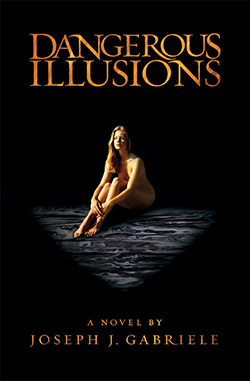
“Not since Dashiell Hammett’s Maltese Falcon has an object of desire caused so much trouble.” – Craigie Zildjian
Dangerous Illusions will be released in hardcover on February 9, 2014 – the 50th anniversary of Ringo and the rest of the Fab Four making their debut in America on the Ed Sullivan Show. It is currently available as an e-book at all major online retailers. For more information, visit: www.dangerousillusions.com.







